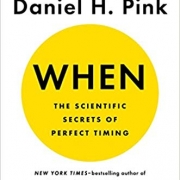Break your chains!
Writing with fewer words sometimes results in harder-to-understand sentences. That can be the case with noun chains—when one noun piles upon another to modify the noun at the end of the chain.
“Nouns used as adjectives often slip out of a writer’s control, producing impenetrable chains,” writes Jan Venolia in Write Right! She mentions “urban public hospital out-patient clinics” as an example of a noun chain.
The basic way to fix noun chains
To fix a noun chain, “look for the noun at the end of the chain. Move it forward and turn the other chunks into short prepositional phrases,” says Venolia.
Thus, the noun chain above would become “out-patient clinics sponsored by urban public hospitals.” The new phrase is longer than the original, but easier for the reader to understand.
More ways to fix noun chains
Raymond Ward suggests on his blog, the (new) legal writer, that hyphens can make noun chains easier to understand. “If you have a three-noun chain, the easiest solution is to hyphenate the first two nouns,” he says. For example, “cost recovery action” can become “cost-recovery action.”
Here’s another great suggestion from Ward: “If the last noun in the chain is generic, such as process, situation, activity, and the like, try deleting it to see whether any meaning has been lost.” For example, “afternoon thunderstorm activity” can become “afternoon thunderstorms.” That’s a win!
Ward also gives examples of replacing a two-noun combination with one word, changing “television antenna manufacturing facility” to “television-antenna factory.” I like how Ward thinks.
Find and break your noun chains!
When you’re writing or editing, please look for noun chains and break them when appropriate.
Disclosure: If you click on an Amazon link in this post and then buy something, I will receive a small commission. I provide links to books only when I believe they have value for my readers.

